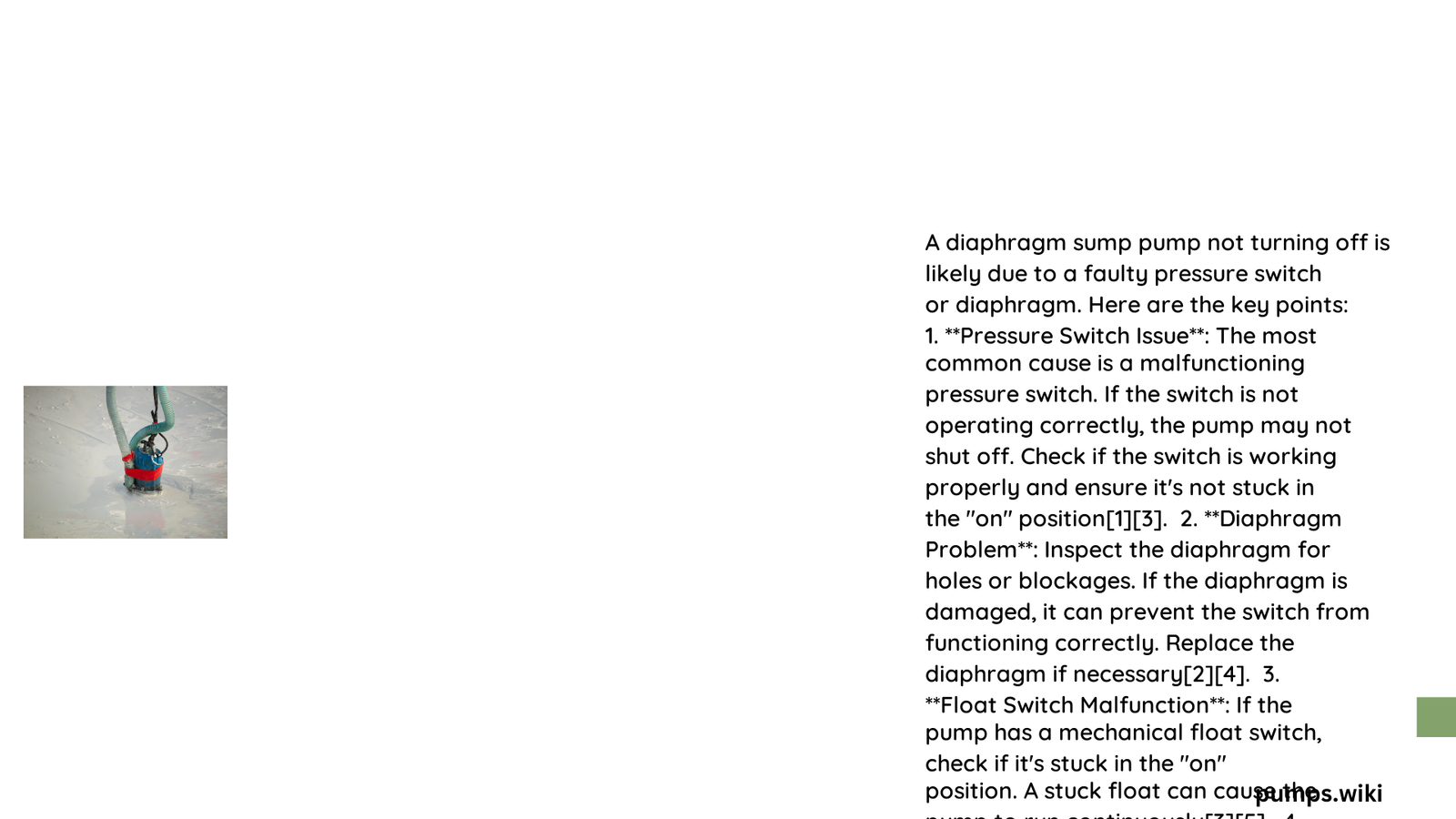A diaphragm sump pump that continuously runs can signal critical system failures, potentially causing significant water damage, electrical risks, and premature pump breakdown. Homeowners experiencing this issue must quickly diagnose underlying problems to prevent costly repairs and protect their property’s structural integrity.
What Causes Diaphragm Sump Pump Continuous Operation?
Why Does the Float Switch Malfunction?
Float switches are critical components in sump pump systems, responsible for activating and deactivating the pump based on water levels. When these switches fail, they can cause the diaphragm sump pump to run continuously.
Common Float Switch Problems
- Physical Obstruction
- Tangled wires
- Debris accumulation
-
Mechanical jamming
-
Positioning Issues
- Incorrect installation
- Misalignment within sump pit
- Restricted movement
How to Diagnose Persistent Pump Running?
| Diagnostic Step | Action | Expected Outcome |
|---|---|---|
| Power Inspection | Check electrical connections | Verify stable power supply |
| Float Switch Test | Manually manipulate switch | Confirm switch responsiveness |
| Water Level Evaluation | Measure pit water volume | Identify potential continuous water sources |
What Are Potential Water Source Problems?
Underground water issues can contribute to continuous sump pump operation:
- High water table
- Groundwater seepage
- Broken underground pipes
- Improper drainage systems
Can Mechanical Failures Cause Continuous Running?
Mechanical issues potentially triggering non-stop operation include:
- Worn diaphragm membrane
- Damaged check valve
- Impeller misalignment
- Bearing deterioration
How to Perform Basic Troubleshooting?
- Immediate Safety Measures
- Disconnect power
- Inspect visible components
-
Clean sump pit thoroughly
-
Float Switch Examination
- Check for physical damage
- Ensure unrestricted movement
-
Test switch responsiveness
-
Discharge Line Verification
- Inspect for blockages
- Confirm proper pipe angle
- Check check valve functionality
When Should Professional Intervention Occur?
Consider professional assistance if:
– Troubleshooting steps fail
– Complex mechanical issues suspected
– Electrical system complications present
– Repeated pump failures experienced
Cost Considerations for Repairs
| Repair Type | Estimated Cost | Time Required |
|---|---|---|
| Float Switch Replacement | $20 – $50 | 30-60 minutes |
| Pump Repair | $100 – $300 | 1-2 hours |
| Complete System Replacement | $300 – $600 | 2-4 hours |
Preventive Maintenance Strategies
- Annual professional inspection
- Regular pit cleaning
- Monitor water levels
- Replace components proactively
- Install backup sump pump system
Technical Specifications to Consider
- Pump capacity
- Voltage requirements
- Diaphragm material
- Switch sensitivity
- Discharge rate
Warranty and Support Options
- Review manufacturer warranty
- Contact original installer
- Explore extended protection plans
- Document all repair attempts
Conclusion

Addressing a diaphragm sump pump that won’t turn off requires systematic diagnosis, careful troubleshooting, and potentially professional intervention. Understanding potential causes and implementing preventive measures can significantly extend your sump pump’s operational life.
Reference:
– Basement Waterproofing Experts
– Plumbing Maintenance Guide
– Sump Pump Manufacturers Association
